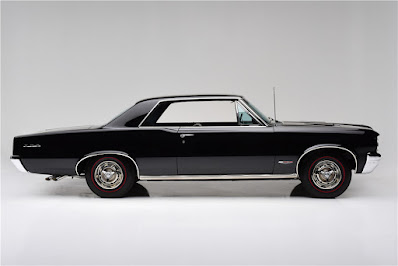I like to tell my staff to find a long established parade, jump in front of it and claim it as our own. Sure, at first folks bristle at the notion but if we do it repeatedly, over time, that parade becomes our own. Especially if we improve upon what it was. Such was the case of Pontiac and their 1964 Tempest GTO.
The notion of a big engine in a small car was certainly nothing new come the fall of 1963 when Pontiac introducted the Tempest GTO. Frankly, neither was the muscle car.
Years prior moonshiners had either modified existing engines or stuffed larger, more powerful ones into their "Rum-Runners" so they could out-run the police.
They even raced their cars when they weren't "working". After Prohibition ended, "hot-rodders" continued to modify their cars and by the the late 1940's and into the '50's, the market for "go-fast" parts had become a cottage industry.
Somewhere along the line, Detroit got wind of the speed-craze even if the major manufacturers were, officially at least, vehemently opposed to supporting racing.
Now, we can debate all day as to what the first "muscle-car" from an automobile manufacturer actually was.
Whether it was the 1949 Oldsmobile Rocket 88, 1955 Chrysler C-300, 1956 Studebaker Golden Hawk or even the 1957 Rambler Rebel, what we do know for certain is it was General Motors' Pontiac division that first used the phrase "musicle-car" when they introduced their intermediate size Tempest "GTO" for model year 1964; regardless of whether or not it was the first. After all, what's in a name?
Revisionist history being nothing new, the combination of the GTO's fiendish good looks, performance moxy and the "muscle" of General Motors marketing department blurred the lines such that the 1964 Pontiac GTO is generally regarded as the one that started the oh-so-short muscle-car craze.
Talk about jumping in front of a parade and making it your own.









No comments:
Post a Comment